Introduction
Despite a vast rural territory in Amazonas State, Brazil, only 12% of the state’s population resides in it. Areas outside the city limits are considered to be rural and are where traditional populations, such as riverside populations, usually live1,2.
Amazonian riverside populations are characterized by living on the sides of rivers and lakes, in wooden stilt houses, in dry or flooded lands, which forces them to an intense adaptation process that follows the dynamics of the rivers3. However, this nomenclature is not limited to occupied geographic spaces; it is also linked to these people’s relationship with their territory4. These households are occupied by families that used to be larger and lived by subsistence activities, without fixed income, and having little access to basic resources5. Their eating habits, similarly to their way of life, are unique. Food is derived mainly from family production, and diet is based on fish and cassava, and occasionally includes game meat6-9. Urban hubs and remote cities coexist in this situation, which is diverse and has different socioenvironmental aspects10. The same occurs with flow of food production, which is generally concentrated in the city of Manaus, limiting distribution and supply in nearby communities, such as those in the study, where only 17 have a market11.
Food plays a physiological and structuring role in the social organization process experienced by human groups12,13. Accordingly, the food consumption pattern reflects the life conditions and culture of these populations. It allows the capturing of factors beyond nutrition features, such as demographic, socioeconomic, environmental and cultural aspects. Thus, the food consumption pattern enables the social changes to which these populations are subjected to be followed14. The food consumption of a given population results from the food system it exists in10. This system encompasses several stages, from production to consumption. It involves technologies, social actors, environment and inputs15.
These populations have been going through changes in their life conditions due to environmental and social modifications that make them leave their traditional production activities (farming and fishing) and obtain part of their food in different ways, such as buying it from small grocery shops in their communities or in the city, which generates costs16. Thus, their diet is affected by the inclusion of ultra-processed foods, by cheaper industrial preparations (richer in sugars, sodium and fat, with low nutritional value). These new food types may be molding their food consumption and, yet, old issues, such as starvation, remain16-18. Research focused on food consumption by traditional non-Indigenous populations is scarce, especially when it comes to riverside populations. Accordingly, the aim of this article was to describe and analyze the food consumption of Amazonian riverside populations based on their life conditions, in order to contribute to knowledge about a quite different diet. The present study hypothesizes that changes in the life conditions of riverside communities have been changing their eating habits, which are based on the consumption of natural food, and leading to a higher intake of highly processed foods.
Methods
A cross-sectional study of household-based quantitative approach was carried out with a rural riverside population in Manaus County, Amazonas State, North Brazil. The population can only be accessed from 195 km (121 terrestrial miles) of land on the left riverbank of Rio Negro (Fig1). A random, stratified and systematic sample was selected, except for houses with children aged less than 2 years, which were systematically included in the research.
Sampling was calculated based on the number of individuals and households in each community; this number was informed by community health agents from the Rural District of Health of the County Health Secretariat because there are no accurate data for this population. Thus, the population was estimated to be 2342 inhabitants living in 765 households (up to June 2018).
Data collection was carried out during three boat trips from March to May 2019, each selected household only being visited once. The team in charge included the researchers at the institution and Masters graduates who were previously trained in meetings and in two pilot studies that were applied in other rural areas in Manaus County.
The sampling calculation took account of the representativeness of groups of adults and elderly people, of both sexes, of children aged less than 2 years and of the probability of finding individuals from each of these groups in each household. The calculation also considered the prevalence of 50% of the diseases of interest of the larger project, and 0.05 accuracy, as well as the 10% likely losses and refusals; it was adjusted to the finite population and resulted in 239 households in 36 locations. At the end, the sample consisted of 287 households distributed in 36 locations, and each household had 4.3 individuals, on average.
A semistructured electronic questionnaire was used as the data collection instrument; it was made available on tablets handed out to each interviewer and developed in the Research Electronic Data Capture (REDCap) platform (https://www.project-redcap.org), which is a software for managing research data. This questionnaire addressed data about socioeconomic conditions (housing conditions, schooling, occupation, social benefit beneficiary, income), food obtainment means (access to local markets, fishing, hunting, farming) and food consumption (food consumed throughout the day). The resident in charge of answering the questionnaire was called the ‘reference resident’ – the individual available at interview time and capable of providing general information about the household and its residents. Information was recorded by interviewers.
Two 24-hour food reports were recorded to screen food consumption: one of them was about the day of the week (day before the interview) and the other one was about the previous Sunday. This technique is an adaptation of the 24-hour dietary recall, which allows verbal information about food and beverages consumed within the last 24 hours to be gathered, given its easy application technique; however, in this case, there was no specification for quantities17. The applied form had a list of food types often consumed by this population – based on previously consulted literature reviews8,19-21 – and the category known as ‘others’, which helped specify food types that were not in the list, but that were eventually mentioned.
The cited food types were distributed in the groups of NOVA classification. This classification was created in Brazil in 2010 and revised in 201416: in natura or minimally processed foods (group 1); processed culinary ingredients such as salt, sugar and oil (group 2); processed foods made from in natura or minimally processed foods and culinary ingredients, such as canned food (group 3); and ultra-processed foods consisting of industrial formulations made with at least five culinary ingredients, plus antioxidants, stabilizers, preservatives and substances simulating or masking sensory attributes to create industrial products ready to eat, drink or heat (group 4).This classification helps food evaluation of the effects of food processing on nutritional and health16.
None of the interviewees refused to participate in the study because they were informed about it by the community health agents who live in their own communities, a fact that has made its acceptance by the population easier. If the resident was absent from a selected household, the interview was carried out in the following household, according to the sampling plan and maintaining the same interval for the subsequent household.
Data were analyzed in R v3.2.1 (R Foundation, https://www.r-project.org). Descriptive statistical analysis and association tests among socioeconomic, food obtainment variables and food types per group in NOVA were carried out. Log-binomial regression was performed to observe the odds ratio (OR) of consuming a given food type conditioned to socioeconomic and environmental variables. Results considered significant (p<0.05) were accepted.
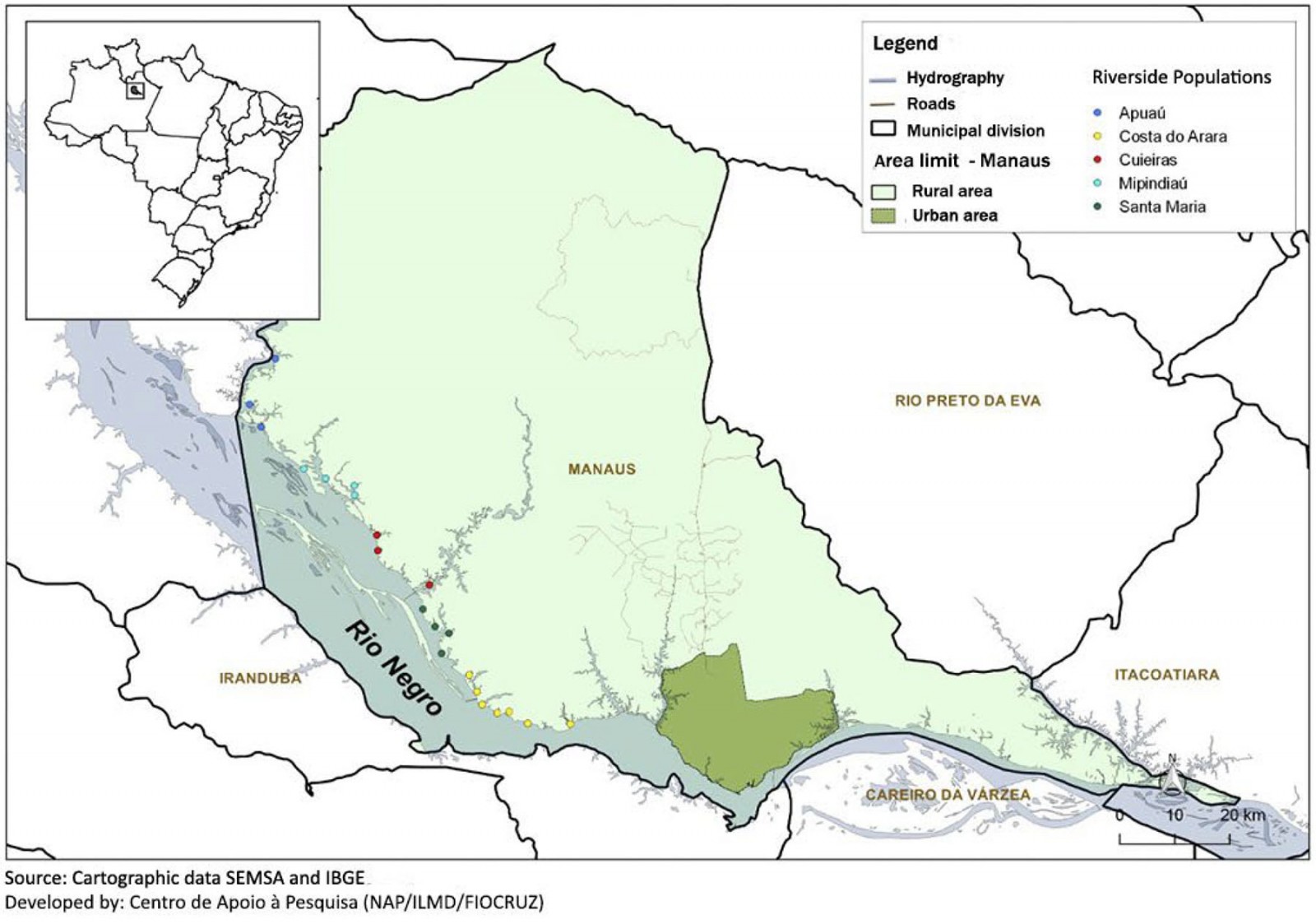 Figure 1: A map of the study area, Rio Negro, Manaus County, 2019.
Figure 1: A map of the study area, Rio Negro, Manaus County, 2019.
Ethics approval
The research is part of a project from Instituto Leônidas e Maria Deane – Fiocruz Amazônia, called ‘Explanatory study on the life conditions, health and access to health services of rural riverside populations from Manaus and Novo Airão, Amazonas State’, which was submitted to, and approved by, the Research Ethics Committee of Fundação de Medicina Tropical, Manaus County (57706316.9.0000.0005).
Results
In total, 287 households were included in the sample of 137 male reference residents and 150 female reference residents. Interviewees were literate (83%), had completed elementary school only (59%) and were autonomous, living on agriculture, pisciculture and extractivism (43%). They mostly lived in wooden houses, with either wooden floors (70%) or walls (94%). They consumed well water (59%). Almost all households relied on electric power; 55% had continuous supply and 35% had partial supply. However, almost all households (92%) cooked on gas ovens. Fishing was the main income source in 39% of the households; 48% of households were ‘Family grant’ beneficiaries, and 43% also received a ‘Forest grant’ – both government subsidies (Table 1).
The food report (Table 2) counted 48 types, which were distributed and tabulated within the four groups of NOVA classification. Group 1 (in natura or minimally processed foods) represented the group accounting for the highest number of foods (24), which corresponded to 50% of the total food. Group 2 (processed culinary ingredients) only contained margarine. Group 3 (processed foods) represented 8.3% of total food consumption – it only included four types. Group 4 (ultra-processed foods) totaled 19 food types (39.6%) and was the second-largest food group consumed.
Group 1 contained the food types most consumed by this population, for the two assessed days: coffee, cassava flour and rice. Other frequently reported food types were beans and milk. Fish (cooked/baked) stood out among the most consumed meat; it was observed that the chance of eating fish was 48% lower in communities that had a small grocery shop (OR=0.52, 95% confidence interval (CI) 0.31–0.84, p=0.009) than in communities that did not have a local grocery shop (Table 3). Poultry (cooked/baked) consumption was 2.76 times higher in locations counting on local grocery shops (OR=2.76, 95%CI 1.64–4.73, p≤0.001) than in locations without local grocery shops. Beef and game meat did not exceed one-quarter of the cited food. Common foods in the region, such as beiju (tapioca flatbread), tapioca flour and tapioca, were little consumed.
Groups 2 and 3 recorded the lowest number of cited food types (five in total). Two food types stood out in group 4: regional popular crackers were the most often cited food in this group, as well as sodas and processed fruit juice.
Socioeconomic conditions and food obtainment means (Tables 4 and 5) were associated with some food groups. An OR was observed for this association. The chance of consuming food in the in natura or minimally processed food group was higher in households with literate residents (OR=1.93, 95%CI 1.03–3.66, p=0.041) and in households with monthly income in the second (OR=2.29, 95%CI 1.26–4.20, p=0.007) and fourth quartiles (OR=4.41, 95%CI 2.08–9.81, p≤0.001). The group of processed culinary ingredients had a higher chance of being consumed whenever any of the residents had a job (OR=4.15, 95%CI 1.70–11.2, p=0.003) or monthly income in the third (OR=2.78, 95%CI 1.22–6.51, p=0.016) or fourth quartiles (OR=2.92, 95% CI 1.44–6.05, p=0.003). The chance of consuming items of this food group in households where residents did not go grocery shopping in the city was lower (OR=0.31, 95%CI 0.06–0.85, p=0.031). Variables ‘fishing’ and ‘farming’ had significant association in the group of processed foods. With respect to fishing, the chance of consuming processed foods was lower in households where residents fish 2–4 times a week (OR=0.29, 95%CI 0.11–0.70, p=0.007), as well as in the ones supported by family farming (OR=0.17, 95%CI 0.04–0.64, p=0.009).
Table 1: Socioeconomic characteristics of the riverside rural population of Rio Negro, Manaus County, 2019 (n=287)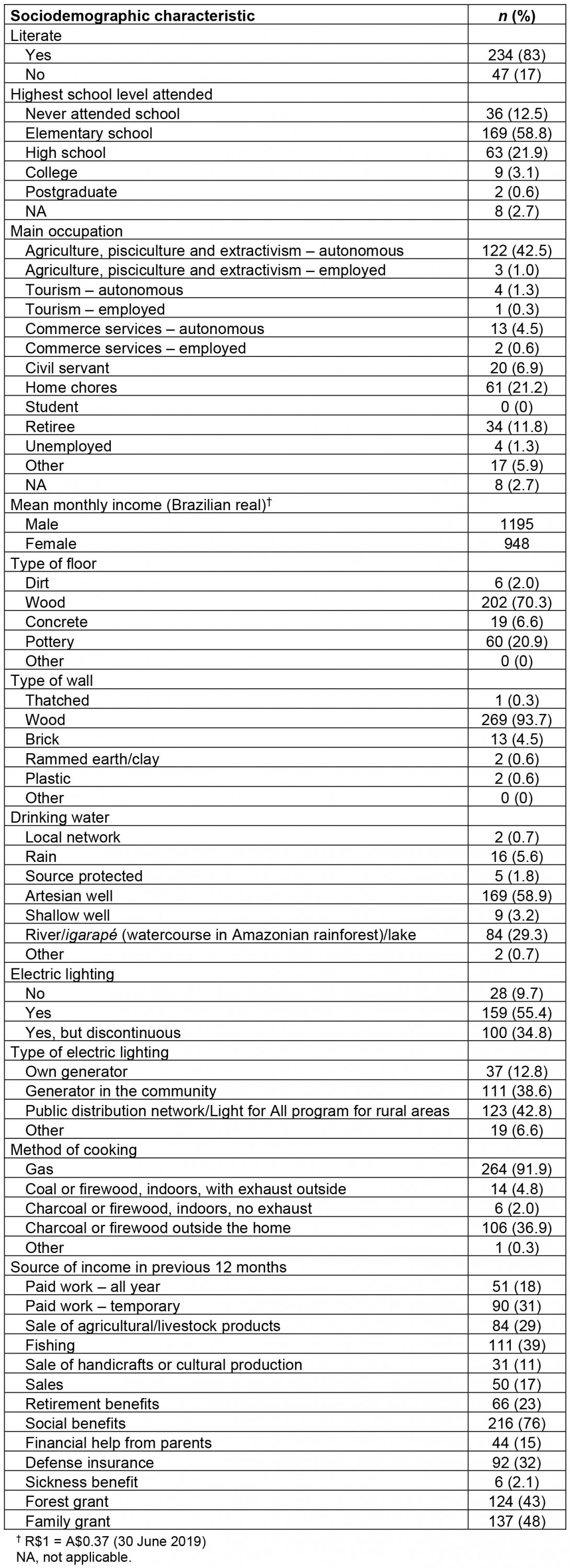
Table 2: Food report for the riverside rural population of Rio Negro, Manaus County, 2019 (n=287)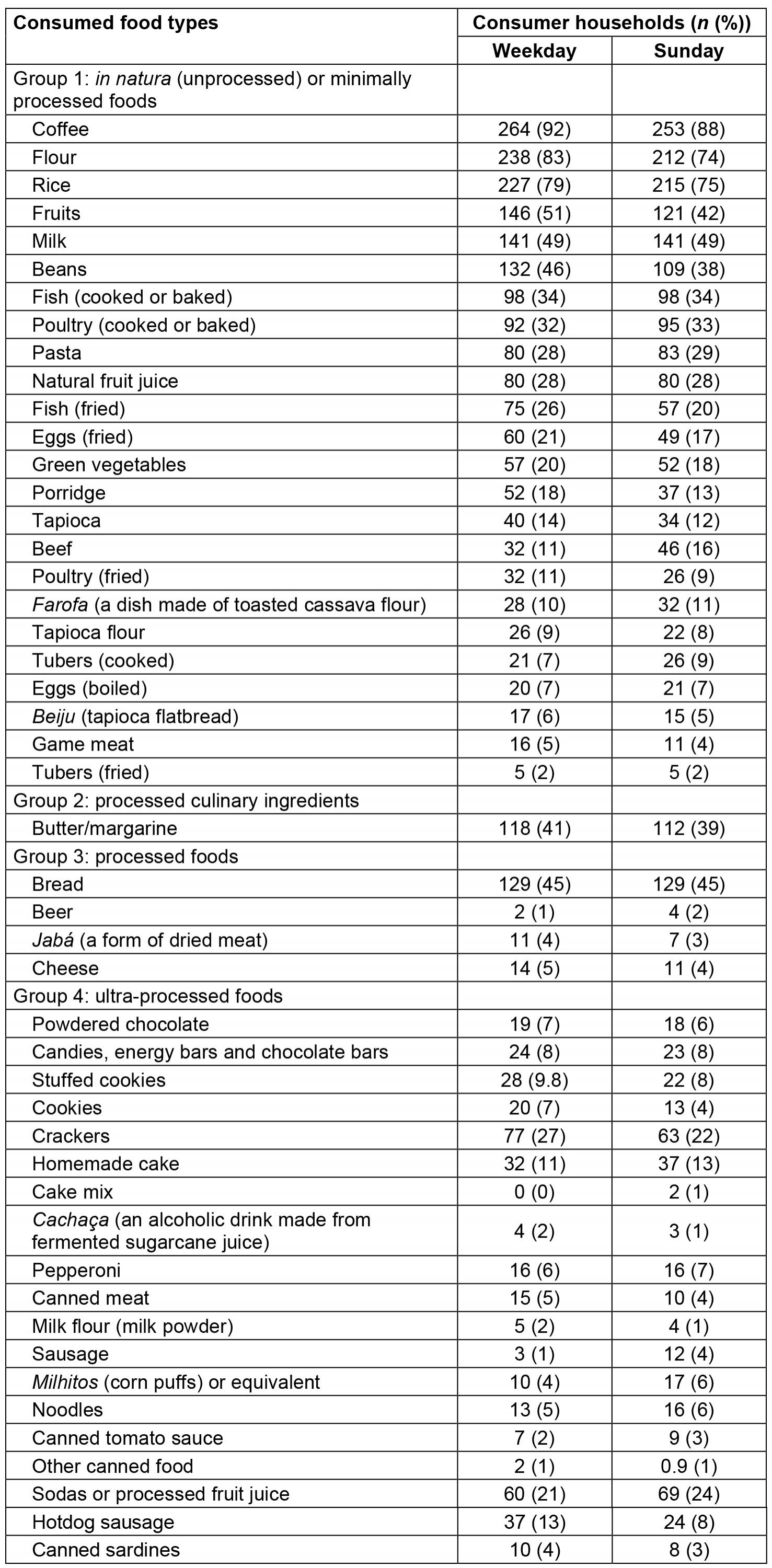
Table 3: Consumption of chicken meat and fish, and the presence of market, for the riverside rural population of Rio Negro, Manaus County, 2019
Table 4: Food intake based on processing level (NOVA), according to socioeconomic conditions in the rural riverside population of Rio Negro, Manaus County, 2019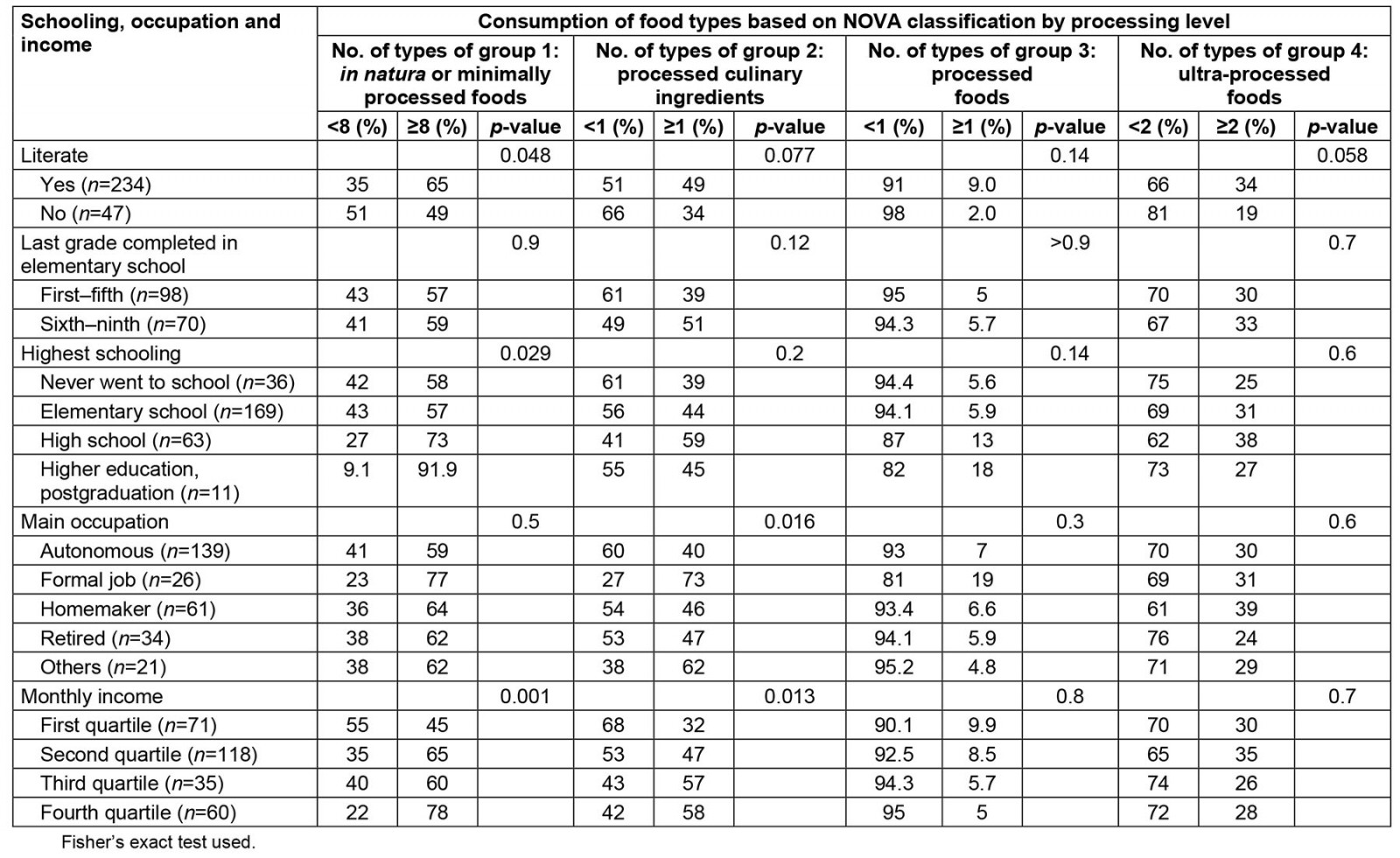
Table 5: Food intake based on processing level (NOVA), according to food obtainment means in the rural riverside population of Rio Negro, Manaus County, 2019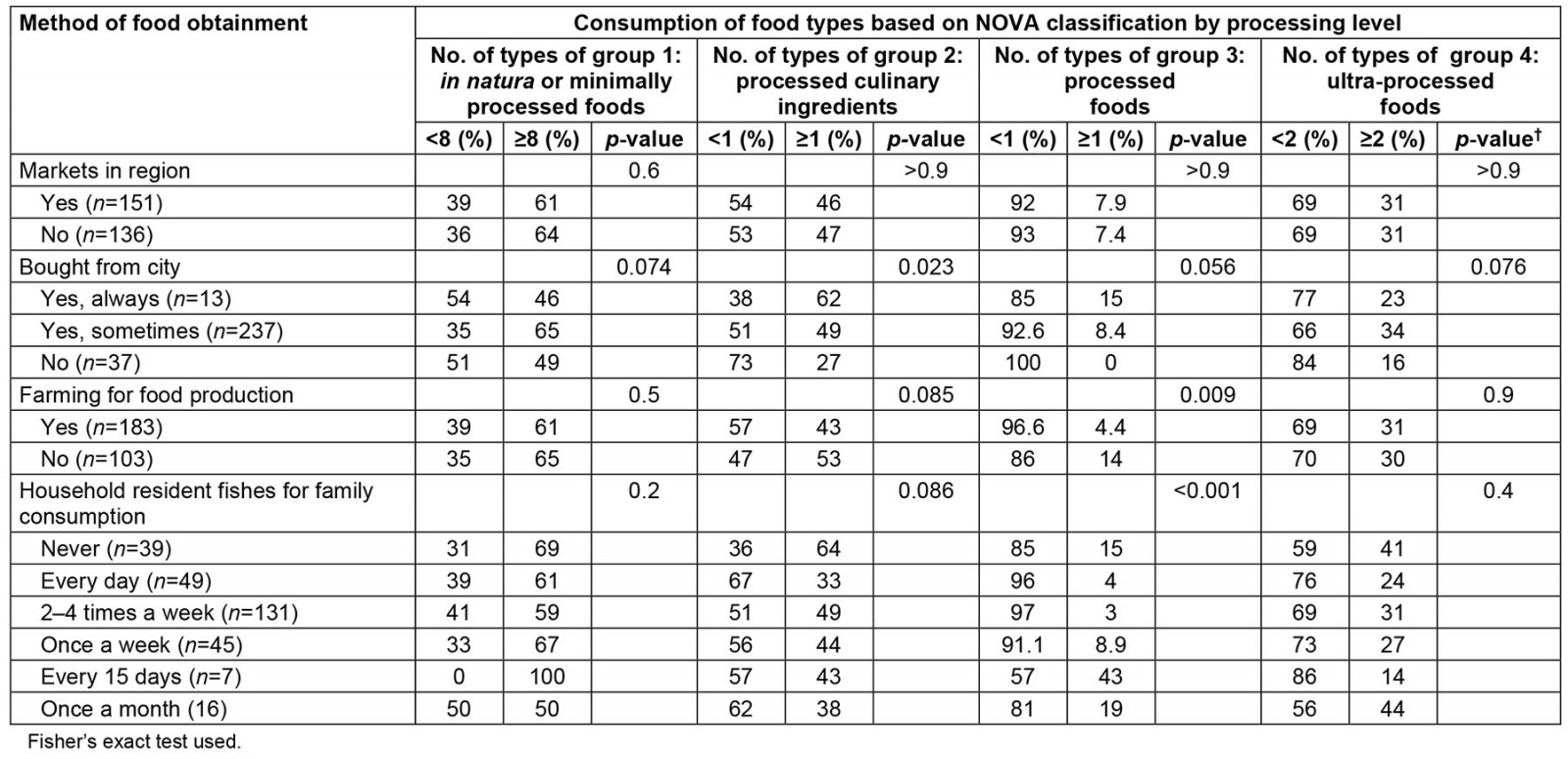
Discussion
Food report
The study highlighted that rural riverside populations consist of families with adverse socioeconomic traits, poor incomes, and low levels of schooling. Important geographic limitations still exist, preventing complete access to services, including transportation, sanitation, and health22-24. Some relevant points are highlighted in this topic: the main food types forming the diet of the assessed population, which is quite similar to that of the general Brazilian population, were coffee, cassava flour and rice1,24. In comparison with another rural area, a food frequency survey conducted in Ibatiba (state of Espírito Santo) reinforced this information. It showed that the consumption of these food types by this population was frequent. Another highlight is related to fish consumption, which is common in the region, and to the growing consumption of frozen poultry meat24,25.
The high consumption of coffee also corroborates data at a national level. This beverage is the most consumed per capita by the population26. It is traditionally consumed in the Amazon with large amounts of sugar; it represents a source of stimulant during times when working hard27. Mixing tapioca flour with coffee is a common habit that leads to the feeling of satiety. This habit is observed in the whole region, even in the most urbanized locations27,28.
By contrast with Brazilian national data, according to which beans are among the three most consumed foods, cassava flour is the third most consumed food in the diet of the assessed population. According to Pesquisa de Orçamentos Familiares (Family Budget Survey), which was carried out in the entire Brazilian territory in 2017–2018, cassava flour intake is two times higher in rural areas26. Cassava flour is mostly consumed in the country’s north and north-east regions. It is considered to be a typical Amazonian food because it is the basis of the indigenous food and is very relevant in the diet of caboclo populations (small Amazonian rural producers)29, as it is their main source of energy (20–50% of the total) and iron (30–40%). Along with fish, cassava flour is the typical Amazonian dish, and its intake does not depend on the time of year27,30-34. In addition, it represents an important means of livelihood for rural communities across the country35,36.
Rice is one of the most widely produced and consumed cereals worldwide, including in Brazil, which is a great producer and consumer of it37. Rice provides approximately 14% of daily carbohydrates, 10% of proteins and 0.8% of lipids38,39. Rice has great symbolic value among Amazonian populations because it is linked to the urban way of life; however, it has not replaced cassava flour consumption in meals40. Comparing rural regions in other countries, such as Vietnam, we find a progressive decrease in rice consumption, and greater diversification of products in daily consumption41.
Another highlight was fish and poultry meat consumption. Fish is the main meat consumed in northern rural areas, given the extensive hydrographic network. Besides its consumption, it is also an important income source22. With respect to the assessed population, it was observed that fish intake was independent of the existence of local groceries, since fishing is a traditional subsistence means for local families. Studies carried out in Pará and Amazonas states pointed to its presence in the diet of riverside populations. Fish is consumed up to six times a week, mainly cooked and baked16,35-37. This occurs in several rural areas, where it acts as the main source of protein and micronutrients, in poorly diversified diets, and in developing countries42,43. A similar example is from isolated riverside communities in Nigeria, which depend on the local ecosystem and river dynamics to maintain their source of protein in their diet44. This consumption, in addition to suffering from seasonal influences, also suffers from the process of deforestation and the construction of dams, as observed in the floodplains of Cambodia42.
Fish intake was followed by cooked and baked poultry. More and more, food coming from other places, such as frozen poultry meat, has been inserted into the diet of these populations, mainly in communities with higher incomes and access to urban areas25,45,46. As can be observed in the current survey, residents in households in locations with local groceries have a higher chance of consuming poultry meat than those living in locations without them.
On the other hand, beef was little mentioned by this population. Previous studies have shown that such food has little participation in the diet of riverside populations30,47. It is assumed that this is because of the high price of beef in the market48, which is much higher than that of frozen poultry. Furthermore, it is hard to create pasture areas for local beef production due to the region’s soil and susceptibility to river flooding49,50. By contrast, residents in rural areas in the south of the country consume a larger quantity of beef because of greater access51. In some cases, in addition to the economic factor, meat consumption is guided by the local culture; for example, in India, consumption is even lower than in this study52.
Game meat recorded the lowest consumption in the group of meats. Game is quite appreciated by Amazonian populations, and for a long time it was the meat mostly consumed by them19,24,53. However, game meat consumption has been declining since several environmental laws have been controlling the hunting activity in this region, and because of economic factors such as the granting of social benefits that change the way of life of these populations40,54.
Studies have shown that fruit consumption in rural areas is low in terms of quantity and variety21,55. However, the fruit intake of Amazonian populations is higher and depends on seasonal factors that influence the emergence of ‘fruits of the season’32,56. When compared to a study carried out in a rural area in the US, a higher consumption of fruits is observed in the Amazonian population57.
Bean consumption is lower than the national frequency (60% of households). This food does not form the basis of food of the riverside population or the general population in Amazonas State, including Manaus County, which has the lowest consumption of beans in the country26,47,58. This finding contrasts with data for other rural areas in the country, where beans are included in the diet more often21. It is important to note that beans, as well as several legumes and vegetables, are not easy to grow in the Amazon because of its acidic soil59.
Food consumption based on NOVA classification
Overall, it was observed that the eating habits of the assessed population mostly encompassed food in the in natura or minimally processed food group, since it totaled half of all food cited in the two assessed days.
This picture is similar to the Brazilian pattern (based on previous studies), in which most of the calories consumed by the population come from food in this group26,36,60. Which is also common in South American countries, such as Colombia, in addition to being the largest consumer of natural products, they also consume a few foods with a higher degree of processing61.
The food consumption of the assessed population was associated with education and high income. Households whose reference residents were literate, and where total income was in the highest quartile, had a higher chance of consuming items in group 1. This finding goes against studies that have found higher consumption of in natura or minimally processed foods by people living under lower socioeconomic conditions and higher consumption of processed foods by people on higher incomes60,62. In rural China, the consumption of fresh foods, mainly cereals, tubers, legumes and vegetables, is higher among people with lower levels of education63. However, living in a rural area has a negative influence on the consumption of food in group 1 of NOVA, in terms of either quantity or variety64,65.
The frequency of food from group 1 in the riverside diet results from the prevalence of a subsistence system where food types come from practices such as farming, fishing, hunting and, eventually, grocery shopping4,5. It is important to note that, despite the aforementioned, food typical of this region was not frequently cited, except fish and cassava flour. This finding is evidence that the traditional diet of these communities has been changing and is being replaced by a ‘market diet’, due to the larger number of local groceries that provide broader access to so-called ‘industrialized food’25,66. This is similar to the situation in traditional African populations who used to produce their own food but are disproportionately inserting purchased food into their diet67,68. The decrease in the amount of locally produced traditional food and the increase in the amount of ‘market food’ – even of the minimally processed type – have changed either the diet or the most traditional way of life of these populations and their relationship with the environment7,25. It remains monotonous, with little variation during meals, but with the use of market products67,69.
The group of processed culinary ingredients, which only had one cited food type, showed significant association with socioeconomic variables. Households whose reference resident had a job, or whose monthly family income was higher, recorded the highest chance of consuming this food type, as well as of developing the habit of buying food in the city.
Consuming food in group 3 (processed foods) was negatively influenced by the most traditional activities, such as fishing and farming, because the intake of food in groups 2 and 3 (of NOVA) is associated with higher socioeconomic conditions70.
Two food types stood out in group 4 (ultra-processed foods): regional popular crackers and sodas or processed juice. The intake of food in this group was not related to socioeconomic variables or means of food obtainment. However, according to the literature, the intake of ultra-processed foods is associated with favorable socioeconomic factors, ie higher purchasing power62,70. The greater the processing, the higher the energy density, such as free sugars and fat. On the other hand, protein and fiber contents are lower17. The excessive intake of these food types and decrease in the intake of in natura or minimally processed foods induce obesity and the development of non-transmissible chronic diseases, which are getting more frequent in these populations71. Studies carried out with children in rural communities in Ecuador showed that, in addition to obesity, development is also a problem due to the increase in ultra-processed foods72,73. Nevertheless, it is worth pointing out another factor assumingly contributing to the modest intake of more processed foods: the rural condition itself. Living in these areas contributes to a monotonous and repetitive diet, given the difficult access to food diversity. Somehow, socioeconomic and geographic conditions lead these populations to a more limited, and sometimes precarious, diet64,67,69.
Conclusion
The present study started from the hypothesis that changes in the living conditions of the riverside communities have changed their eating habits, but showed that this change is not yet very marked. The diet is still based on in natura or minimally processed foods, and the other more processed foods do not contribute much to the diet of this population.
However, some traditional food types of the Amazonian cuisine, and the ones that are produced and processed by consumers themselves (such as beiju, tapioca flour and small tapioca – a ‘pancake’ of tapioca starch), stood out as not being mentioned very often. This finding may suggest a break with the most traditional way of life due to the introduction of ‘market food’.
It is worth noting that fish is still the most consumed meat, which is eaten with cassava flour. However, it is followed by poultry meat, which has gained room on this population’s plate and was associated with locations that depend on local groceries.
In addition to the low intake of several traditional foods, the other surprising result was the lack of association between the intake of ultra-processed foods and high income or education in the riverside populations.
These results highlight the need to insert questions about diet in population surveys and of conducting nutritional studies aimed at reducing a lack of information about the largest traditional Amazonian population, in order to adjust public policies to this hard-to-reach population.
Funding
The present research was supported by both Conselho Nacional de Pesquisas (National Council for Scientific and Technological Development) (Process 407944/2016-8 and 400898/2018-7) and FAPEAM/PPSUS-01/2017-EFP_00014168.
Publication disclosure
This article is derived from a thesis submitted in 2021 for a Master’s Degree (Public Health) to the Post-Graduation Program in Life Conditions and Health Situations in the Amazon, Instituto Leônidas e Maria Deane – Fiocruz Amazônia. Thesis title: ‘Food consumption profile of rural riverside populations’.
Conflicts of interest
The authors declare no conflicts of interest.
References
You might also be interested in:
2022 - Social support in rural communities in Manabi province, Ecuador
2015 - A decade of Rural Clinical School research: a PubMed review


